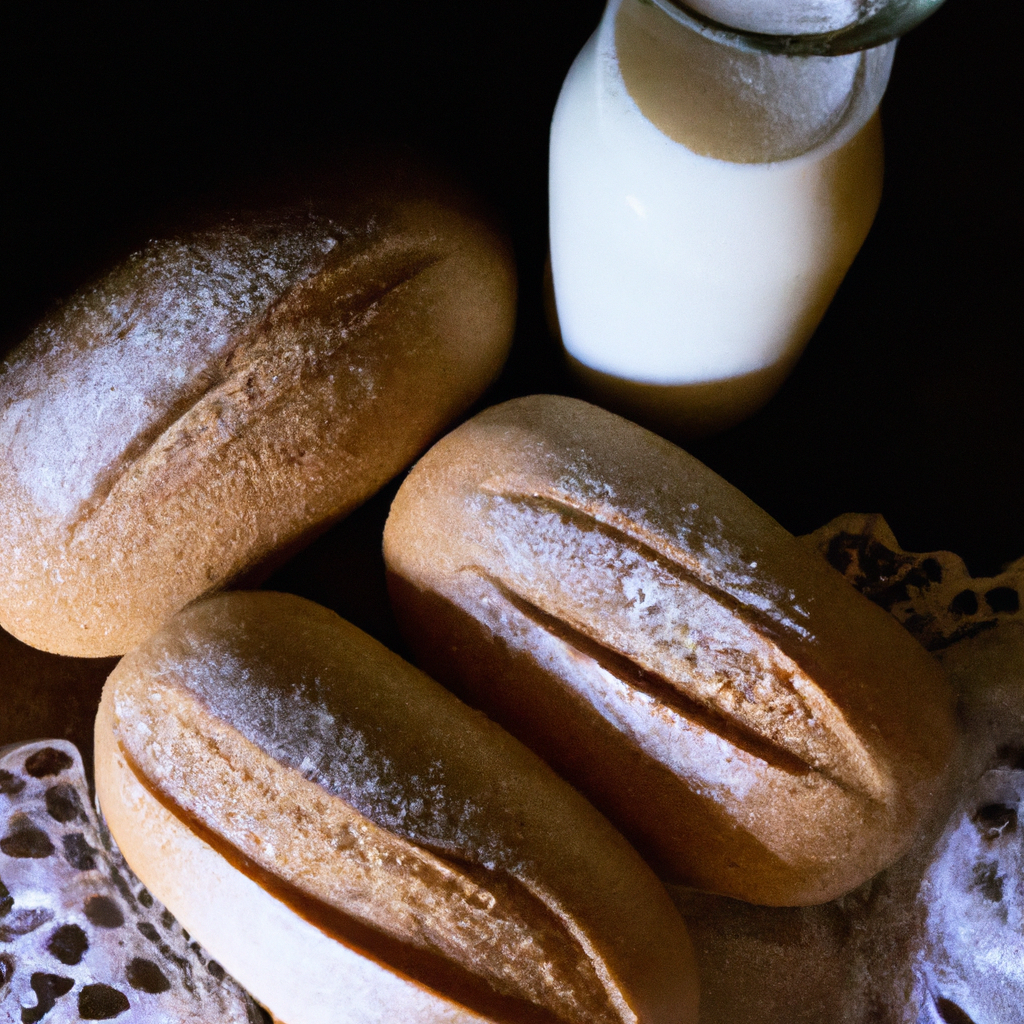The culinary world is a cornucopia of colors and flavors, an art form in its own right. And what better way to capture the delectable essence of a dish than through the lens of a camera? However, in the realm of food photography, lighting becomes a crucial ally in creating masterpieces that transcend the boundaries of a mere photograph. Amidst the plethora of artificial lighting techniques at our disposal, it is perhaps the humblest and most omnipresent source of illumination that truly steals the spotlight – natural light. In this article, we will embark on an enlightening journey, exploring why natural lighting is the unsung hero that holds the key to breathtaking food photography. So, grab your cameras and get ready to unravel the hidden wonders of natural light, as we unlock the secrets to capturing gastronomical art in its purest, most inviting form.
1. Illuminating Culinary Magic: Unleashing the Power of Natural Lighting in Food Photography
Food photography is an art that requires special attention to detail, texture, and color. While advanced cameras and editing software play a significant role, nothing quite compares to the breathtaking effect of natural lighting. Capturing the essence of a dish, its vibrant hues, and mouth-watering appeal is made all the more possible when the magical touch of sunlight is harnessed.
Natural lighting brings an unparalleled warmth and authenticity to food photography. It allows the true colors and textures of dishes to shine through, creating a visually captivating allure that is hard to replicate with artificial lights. The subtle interplay of light and shadows adds depth and dimension, elevating the visual storytelling of a recipe, and evoking emotions that resonate with the viewer. In essence, natural lighting has the power to transform a simple dish into a mouthwatering masterpiece, enticing the senses with every pixel.
Harnessing the power of natural lighting requires skill and knowledge. Here are some key tips to effectively utilize sunlight in your food photography:
- Timing is everything: Shoot during the golden hours of sunrise and sunset for soft, warm light that beautifully illuminates your subject.
- Choose the right setting: Experiment with different locations in your workspace or outdoors to find areas with diffused lighting or interesting shadows that complement the dish.
- Reflect and bounce: Utilize white reflectors or foam boards to bounce light and fill in shadows, giving your photograph a more balanced and professional look.
- Shoot in Raw: Take advantage of the flexibility and added control that shooting in Raw format offers during post-processing, ensuring optimal color accuracy and detail.
The magic of natural lighting can truly transform your food photography, adding a touch of enchantment to every image. With dedication, practice, and an understanding of how light interacts with your subject, you’ll be able to create stunning visuals that leave viewers with an insatiable desire to savor the delectable delights presented before them.
+
2. Sunlight as a Secret Ingredient: How Natural Lighting Elevates the Beauty of Food Photography
Sunlight has long been hailed as the unsung hero of food photography. Its ability to transform an ordinary dish into a mouthwatering masterpiece is unparalleled. The soft, warm glow that filters through a window or gently kisses the edges of a plate adds depth, texture, and a natural allure that no artificial lighting can replicate.
When capturing the beauty of food, natural lighting is essential for several reasons. First and foremost, it enhances the colors and tones of the dish, ensuring that each ingredient is vividly brought to life. From the vibrant red of a juicy tomato to the golden hues of a perfectly baked loaf of bread, natural light highlights the inherent beauty of the ingredients, making them look fresh, enticing, and enticingly real.
Moreover, sunlight has an uncanny ability to create captivating shadows. These shadows give the image depth and dimension, making the food appear more three-dimensional and enticingly tactile. The interplay between light and shadow adds a sense of drama, drawing the viewer’s eye to the most attractive aspects of the dish, such as the perfectly grilled steak or the delicate drizzle of sauce on a dessert.
Natural lighting also provides photographers with the freedom to manipulate the mood and atmosphere of a food photograph. By adjusting the angle of the light source or positioning the dish near or far from the window, photographers can create an array of effects. Whether it’s a cozy and intimate scene bathed in warm light or a bright and energetic shot filled with natural highlights, sunlight offers endless possibilities for creative expression in food photography.
In conclusion, natural lighting is undoubtedly the secret ingredient that elevates the beauty of food photography. Its ability to enhance colors, create captivating shadows, and manipulate mood makes it an invaluable tool for photographers striving to capture the essence and allure of food. So, the next time you embark on a food photography adventure, don’t forget to harness the power of sunlight to transform your images from ordinary to extraordinary.
3. Painting with Sunbeams: Harnessing the Artistic Appeal of Natural Lighting for Stunning Food Photography
When it comes to food photography, lighting plays a crucial role in showcasing the beauty and appeal of the dishes. While artificial lighting has been commonly used in the past, there is a growing trend of harnessing the artistic appeal of natural lighting, specifically sunbeams, to create stunning and captivating food photographs.
The use of natural lighting, especially sunlight, adds a unique charm and depth to food photography. Sunbeams have a way of highlighting the textures, colors, and details of the dishes in a way that artificial lighting simply cannot replicate. They create a soft and warm glow, casting interesting shadows that add dimension and an artistic touch to the composition.
To effectively capture the power of sunbeams in food photography, it is important to understand how light behaves. Sunbeams are strongest during the golden hours, which are the first and last hours of daylight. During these times, the sunlight is diffused and has a warm hue, creating a dreamy and ethereal effect on the subject.
When shooting with sunbeams, it is essential to position the subject strategically to make the most of the available light. Placing the dish near a window or doorway where sunlight streams in can create a beautiful play of light and shadow. Experimenting with angles and varying the distance from the light source can also help in achieving different effects.
While natural lighting may not always be readily available or suitable for every situation, incorporating it into food photography can elevate the visuals to another level. The use of sunbeams can add a touch of magic and evoke a sense of warmth and authenticity in the images. It allows the photographer to paint with light, transforming a simple dish into a work of art that is visually captivating and inviting.
4. From Farm to Film: Capturing the Essence of Freshness through Natural Lighting in Food Photography
Farm-to-table has become more than just a trend; it’s a way of life. As people become more conscious of what they put into their bodies, the importance of fresh, locally sourced ingredients has never been higher. And what better way to capture the essence of freshness than through the art of food photography?
In food photography, natural lighting is key to truly showcasing the beautiful colors and textures of farm-fresh ingredients. It allows the photographer to capture the food in its most vibrant and truest form. By using natural light, the photographer can create a warm and inviting atmosphere that makes the viewer feel as if they are right there, in the heart of the farm.
When shooting with natural light, it’s essential to find the perfect balance between light and shadow. The interplay of light and shadow adds depth and dimension to the photograph, making the food appear more tantalizing and three-dimensional. By positioning the food at just the right angle, the photographer can create interesting shadows that further enhance the visual appeal.
In addition to lighting, the composition of the photograph is equally important. Using the rule of thirds, photographers can create visually pleasing images that draw the viewer’s eye to the main subject. Placing the fresh ingredients against a rustic backdrop, such as a weathered wooden table or a sun-kissed field, adds to the overall natural and organic aesthetic.
To capture the essence of freshness in food photography, consider the following tips:
- Shoot during the golden hours – sunrise and sunset – for soft, warm lighting
- Experiment with different angles and perspectives to find the most captivating shot
- Embrace imperfections, such as uneven shapes or a touch of dirt on the vegetables, to showcase the natural beauty
- Use props that enhance the farm-to-table concept, such as wooden utensils or vintage plates
- Don’t be afraid to get up close and personal with the food to highlight its textures and intricate details
Through natural lighting and thoughtful composition, food photography can transport the viewer to a charming farm, where the smell of fresh produce fills the air. It’s a visual feast that captures the essence of freshness and invites everyone to appreciate the beauty of farm-to-table dining.
As food photographers, we have an almost infinite array of options to choose from when it comes to lighting our shots. While it’s great to mix it up and play around with what works best in certain scenarios, natural light should never be forgotten. Using natural light can be one of the most efficient and simple ways to capture stunning images of food. So grab that canvas bag of props and head out to the daylight, and see what your camera can do.



